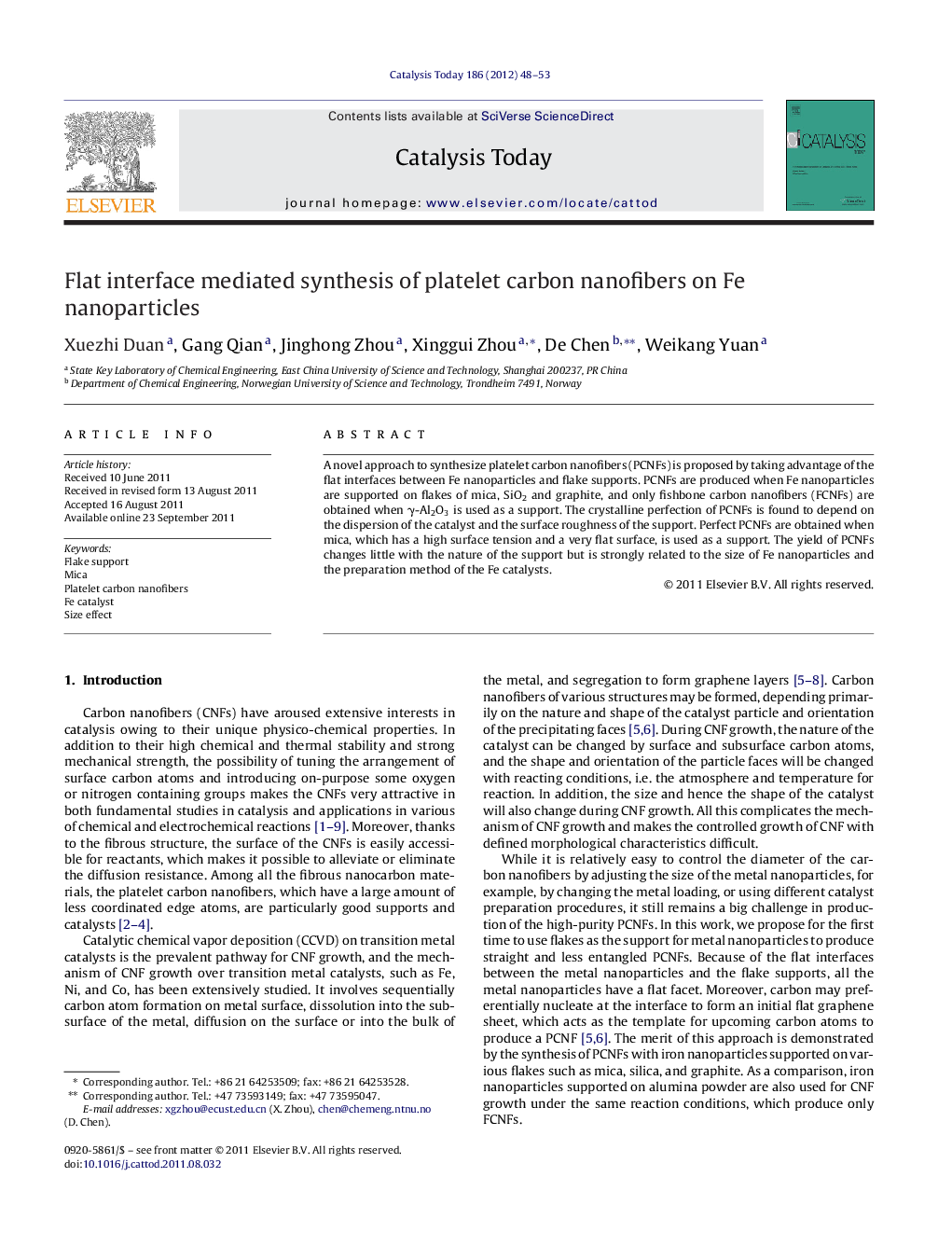| Article ID | Journal | Published Year | Pages | File Type |
|---|---|---|---|---|
| 55481 | Catalysis Today | 2012 | 6 Pages |
A novel approach to synthesize platelet carbon nanofibers (PCNFs) is proposed by taking advantage of the flat interfaces between Fe nanoparticles and flake supports. PCNFs are produced when Fe nanoparticles are supported on flakes of mica, SiO2 and graphite, and only fishbone carbon nanofibers (FCNFs) are obtained when γ-Al2O3 is used as a support. The crystalline perfection of PCNFs is found to depend on the dispersion of the catalyst and the surface roughness of the support. Perfect PCNFs are obtained when mica, which has a high surface tension and a very flat surface, is used as a support. The yield of PCNFs changes little with the nature of the support but is strongly related to the size of Fe nanoparticles and the preparation method of the Fe catalysts.
Graphical abstractFlat interfaces between Fe particles and flake supports favor the formation of platelet carbon nanofibers.Figure optionsDownload full-size imageDownload high-quality image (312 K)Download as PowerPoint slideHighlights► Flat interfaces between Fe particles and flake supports favor the formation of PCNFs. ► The crystalline perfection of PCNFs depends on the wettability and surface roughness of the support. ► The yield of PCNFs is sensitive to the size of Fe nanoparticles.
